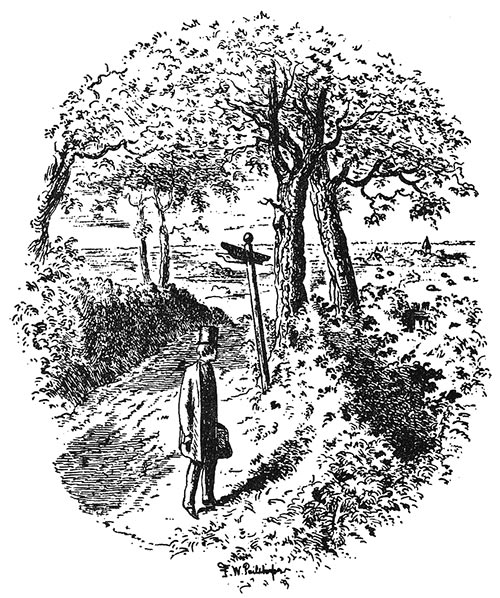We looked at two articles discussing the topic of how Emily Bronte challenges gender norms/hierarchically constructed power of the Victorian Era in her writing. These articles include “Fighting Back Against the Encroachment of Patriarchal Power on Female Domains in Wuthering Heights,” by Banu Akcesme, and “Nineteenth Century Women Writers and the Challenge of Gender Roles,” by Tinna Sif Sindradóttir. It is bold of Emily Bronte to touch on gender issues in her writing. Most of the 19th century female writers preferred to ignore these issues out of fear of the reactions of male critics in a male-dominated literary world.
Akcesme asserts that in Wuthering Heights, Bronte poses a critique of the misogyny prevalent in the 19th Century through her depiction of Edgar and Heathcliff as having “murderous competition” for profit, wealth and progress. According to Akcesme, the obsession with ownership that we see in male characters in the novel is an objectification of nature, land and the female body. Females were seen as another form of property that males had control over. The male characters’ attempt to dominate Thrushcross Grange and Wuthering Heights with force. Because the home is seen as the women’s sphere, this male domination/infiltration can be seen as a metaphor for rape. This attempt to usurp the home and nature displaces female characters and leaving them vulnerable to exploitation. For example, we see Catherine victimized by the rivalry between Hindley and Heathcliff. Then we see her take sides with Heathcliff because of her brother’s attempt to assert his power. In addition, this article asserts that Emily Bronte challenges hierarchically constructed power through her female characters’ rejection of traditionally assigned roles like motherhood, wifehood, and sisterhood which leads to their development of a new model for femininity, breaking free from the bourgeois mindset that women are meant to be kept in the house and raise children.When Heathcliff refers to Catherine as his life and soul after her death it can be seen how dependent he was on her, and how desperately lost men would be without women, which again breaks the norms. Akcesme explains that in Wuthering Heights, women do not depend on men for fullness and completion instead there’s domestic disorder, this is seen in the relationship that Cathy and Hareton have in how it challenges the male-dominated family structure. This mayhem is a result of the blurred boundaries between genders; the household is no longer a place for women to be secure and content. We see Catherine reject her strict patriarchal and religious upbringing by destroying the religious texts she is forced to read and by spending Sundays on the moors rather than in the church. Also, we see that Cathy lacks feminine domesticity when she deliberately refuses to show any signs of hospitality when she meets Lockwood which Lockwood finds “exceedingly..disagreeable.” Cathy’s free spirit and refusal to be a “tamed” woman contradicts the stigma of women during the Victorian Era and breaks away from the male-domination concept.
The article summarizes that resistance is displayed all throughout Wuthering Heights, and Bronte’s goal was to fight gentrification and encourage women to stand up for themselves and understand their worth. Due to the restrictions on women during this time period, in order to accept her writing, readers often picked out the unfeminine qualities and chose to view those, some even going as far as to say it must be a man that has written this. Bronte was a strong outspoken female writer who was not afraid to discuss the topics that many women feared to talk about in the male-dominated society. The images of womanhood Bronte gives shed a new light on the objectivity of women and their misrepresentation. Regardless if it was a woman, inheritance, rights, or property made little difference to men, they believed they had full control over everything and everybody. Wuthering Heights was Bonte’s defiance, and voice for females.
In her essay, Sindradottir acknowledges Bronte’s use of strong willed female characters. Notably, they possess characteristics that oppose how Victorian women were supposed to act. Similarly, just like the characters she writes of, Bronte opposed gender norms through her writing style as a whole. For instance, Bronte portrays Catherine as having both feminine and masculine traits; she displays feelings of love for certain characters and anger at others. Thus, the juxtaposition of these characteristics reflects how Bronte writes in a darker way that women were not ever known for writing in, leading to harsh criticism. Furthermore, women were not supposed to use coarse language, so critics reading Wuthering Heights at the time were shocked by Bronte’s word choices. At the time, women were supposed to conceal their feelings and keep to themselves; Bronte’s defiance of this is significant because it allows other women to see what she’s doing and be inspired to do the same.
Sindradóttir speaks in various ways to how Bronte challenged Victorian views on societal expectations of gender. Bronte’s critique of formerly one-dimensional portrayals of women is paired with Victorian concepts of marriage and the role of women. By expanding upon the depth of her characters and creating a human perspective, Sindradóttir describes how Bronte is able to highlight societal issues such as the lack of legal rights within institutions such as marriage. Many men believed that they had the right to abuse their wives at the time, but Isabella disagreed with the concept and took matters into her own hands when Heathcliff began abusing her. She bravely took her sons and went into hiding to avoid the way he treated her. Bronte showed women that they were allowed to prioritize their well-being. This hushed concept likely inspired many Victorian women to walk away from abusive relationships to protect themselves and their children. Bronte’s characters symbolically struggle against patriarchal institutions, complex issues that were often ignored during her time.


